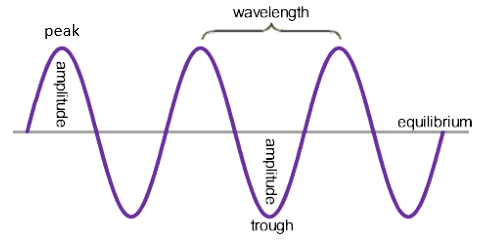3.02 explain the difference between longitudinal and transverse waves
Transverse Waves:
- A wave that vibrates or oscillates at right angles (perpendicular) to the direction in which energy is transferred/ the wave is moving.
- g. Light
Longitudinal Waves:
- A wave that vibrates or oscillates at parallel to (along) the direction in which energy is transferred/ the wave is moving.
- g. Sound


